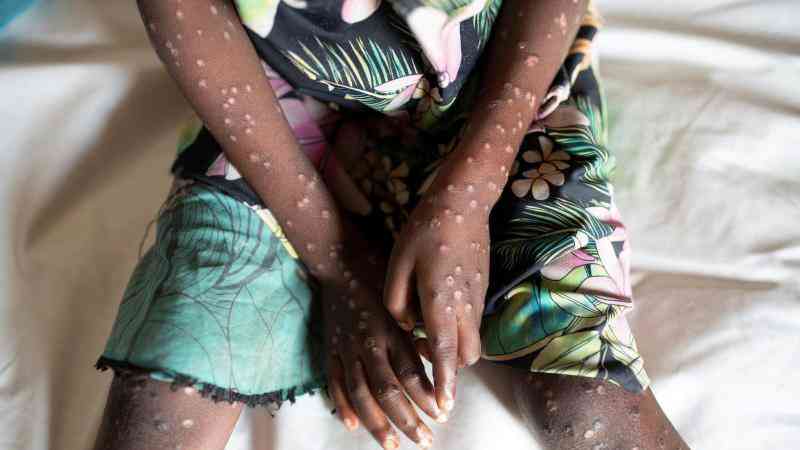The Africa Centres for Disease Control and Prevention declared Mpox a Public Health Emergency of Continental Security in August 2024. One year after the first case was detected at the Taita Taveta border, Kenya is facing a troubling surge in cases, with 314 confirmed infections across 22 counties as of July 31, 2025.
The rising numbers indicate a need for intensified containment efforts. According to the Health ministry, Mombasa County bears the brunt with 146 cases, followed by Busia (63), Nakuru (21), Kilifi (19), Nairobi (17), and Makueni (13), highlighting a widespread geographic reach that demands immediate, comprehensive, and collaborative action.
Mpox primarily spreads through close contact with an infected person. This includes direct contact with the rash, scabs, or body fluids of someone with Mpox. Intimate and sexual contact are significant modes of transmission too.
Follow The Standard
channel
on WhatsApp
The symptoms of Mpox typically begin within three weeks of exposure. The illness often starts with flu-like symptoms, which may include fever, headache, muscle aches and back pain. These symptoms are usually followed by a distinctive rash that progresses through several stages.
The rash can appear on various parts of the body, including the face, palms of the hands, soles of the feet, groin and genital regions, and even inside the mouth, throat, anus, rectum, or vagina. Initially, the rash may look like pimples or blisters, which then fill with fluid or pus and eventually fall off. Individuals are considered infectious from the onset of symptoms until all scabs have fallen off and a new layer of skin has formed, typically lasting 2-4 weeks.
Early and accurate detection is crucial for containing the spread of Mpox. The preferred laboratory test for diagnosing Mpox is the detection of viral DNA by Polymerase Chain Reaction. Samples are typically collected from skin lesions and sent to a specialised laboratory for testing.
The significant surge in Mpox cases necessitates a robust and multi-pronged prevention strategy involving the Ministry of Health, key stakeholders within national and county government agencies, communities, and individuals. Firstly, the Health ministry should ensure enhanced surveillance and rapid response. Continuous surveillance, particularly in border regions and high-incidence counties like Mombasa and Busia, is paramount. This includes active case finding, robust contact tracing, and deployment of rapid response teams to investigate suspected cases and contain outbreaks. In addition, the Health ministry should ensure screening at points of entry.
Secondly, a comprehensive public awareness, risk communication and community engagement strategy is essential. It involve disseminating accurate, clear, and culturally appropriate information about Mpox, how it spreads, its symptoms, and preventive measure through various channels.
Thirdly, there is need to strengthen our healthcare capacity. Training healthcare workers across all levels on Mpox identification, diagnosis, infection prevention and patient management is vital. Ensuring adequate supplies of personal protective equipment for healthcare workers and diagnostic kits for laboratories is also crucial. Designated isolation facilities should be established.
Fourthly, the Health ministry should ensure we have a robust vaccination strategy. Finally, individuals and communities should make personal hygiene a priority. Regular handwashing with soap and water, especially after contact with potentially contaminated surfaces or individuals.
Dr Gathu is an Assistant Professor, Department of Family Medicine at Aga Khan University Medical College and a consultant Family Physician at Aga Khan University Hospital Nairobi
Follow The Standard
channel
on WhatsApp
By Catherine Gathu
